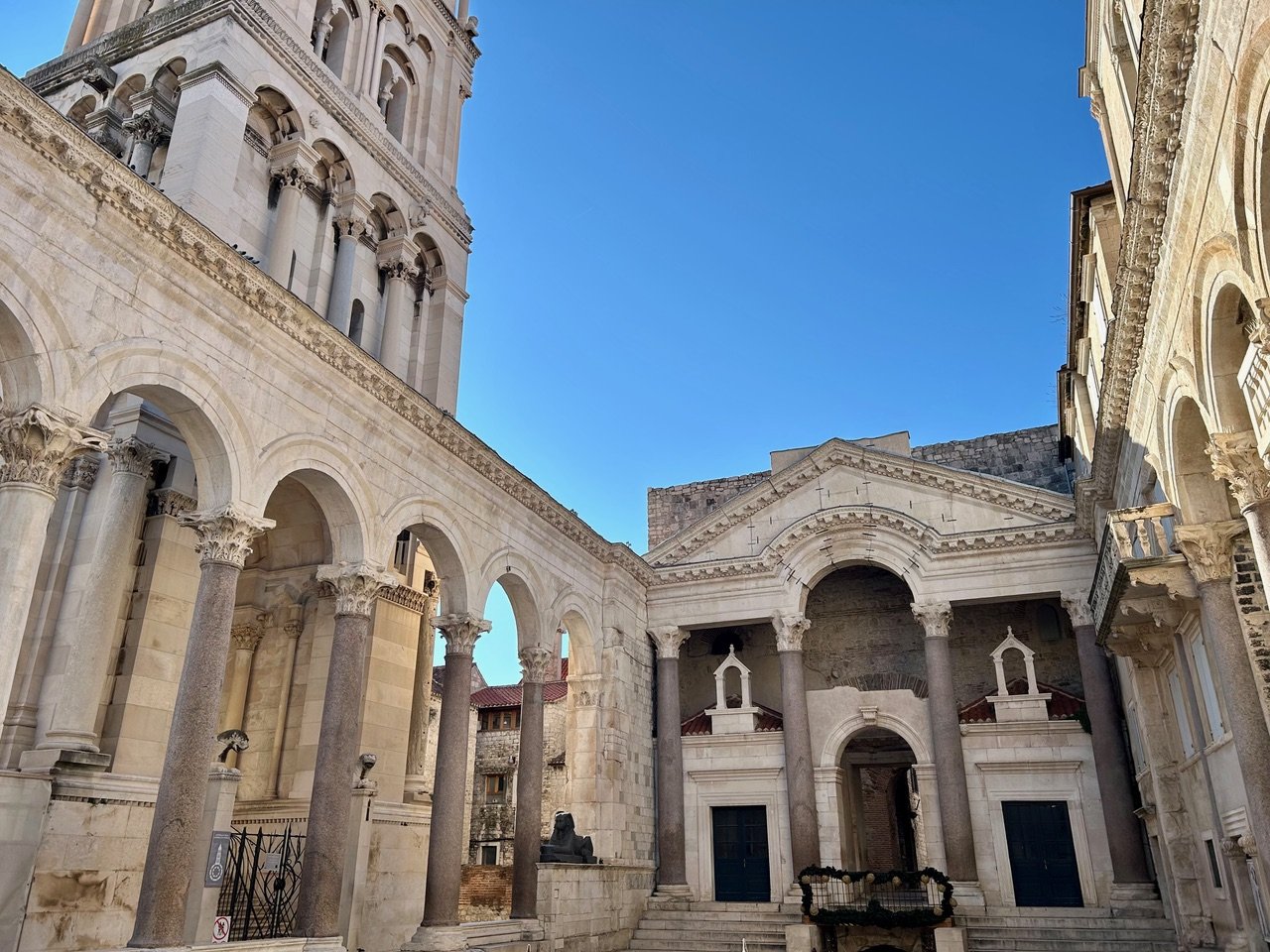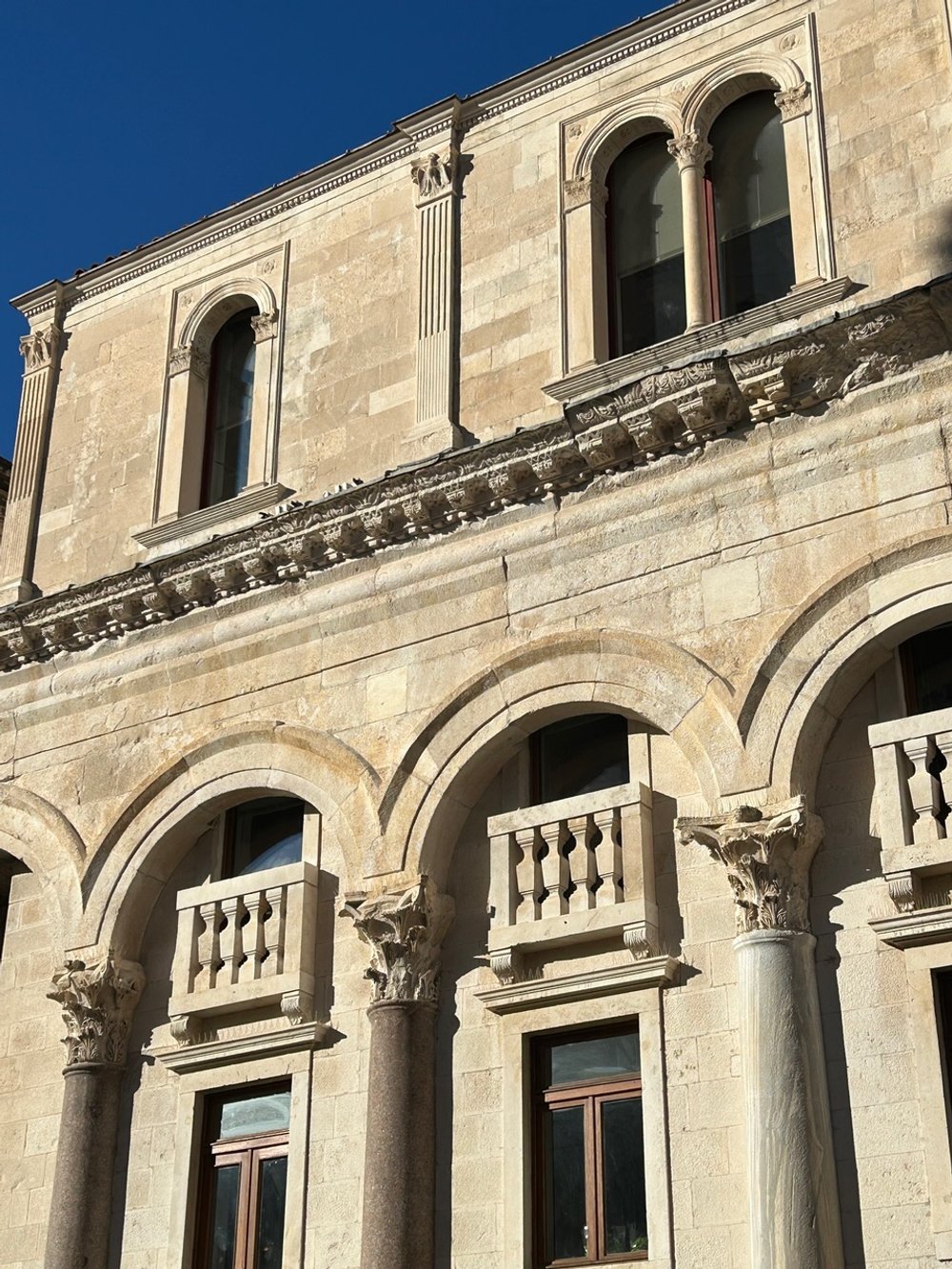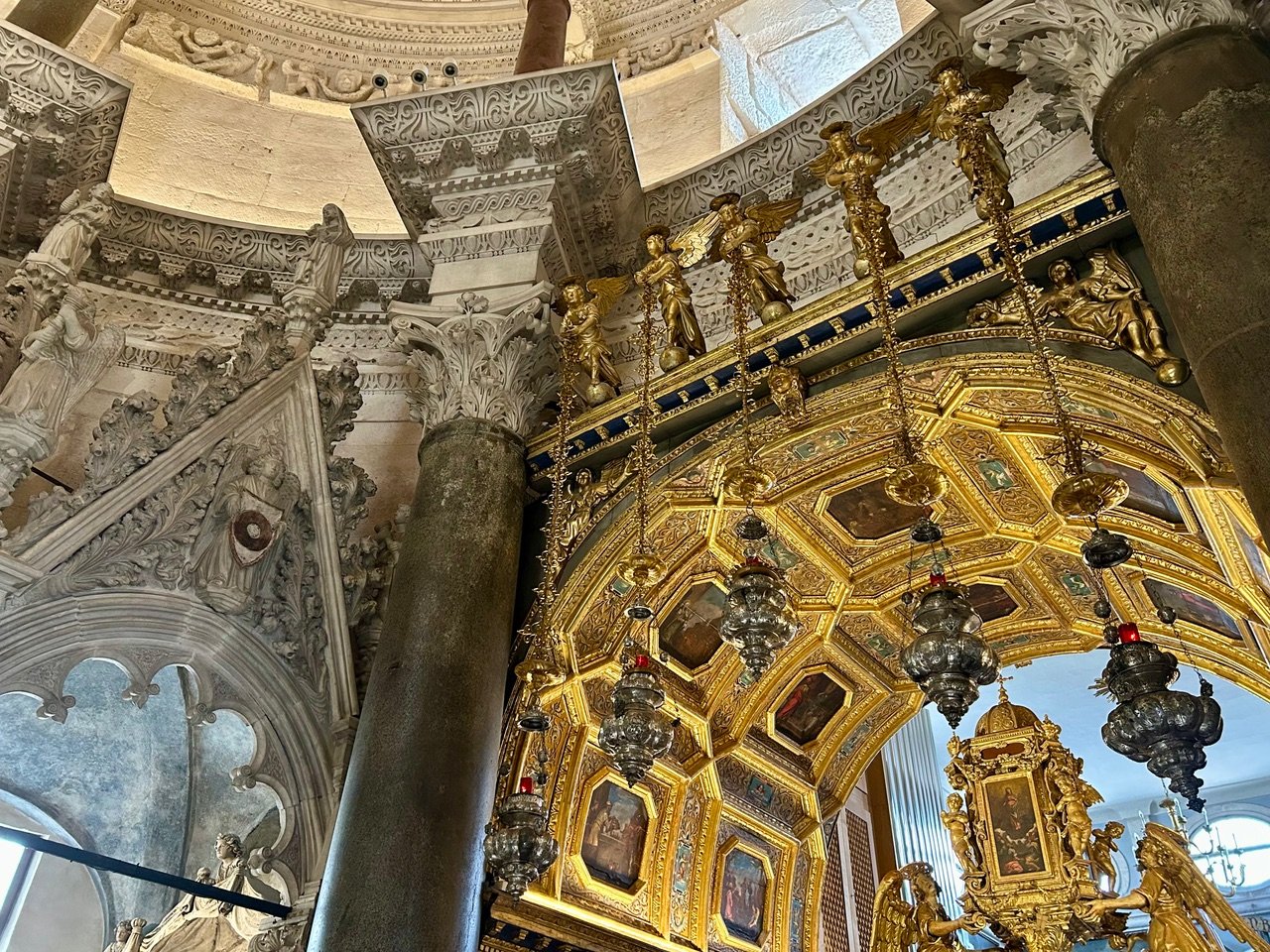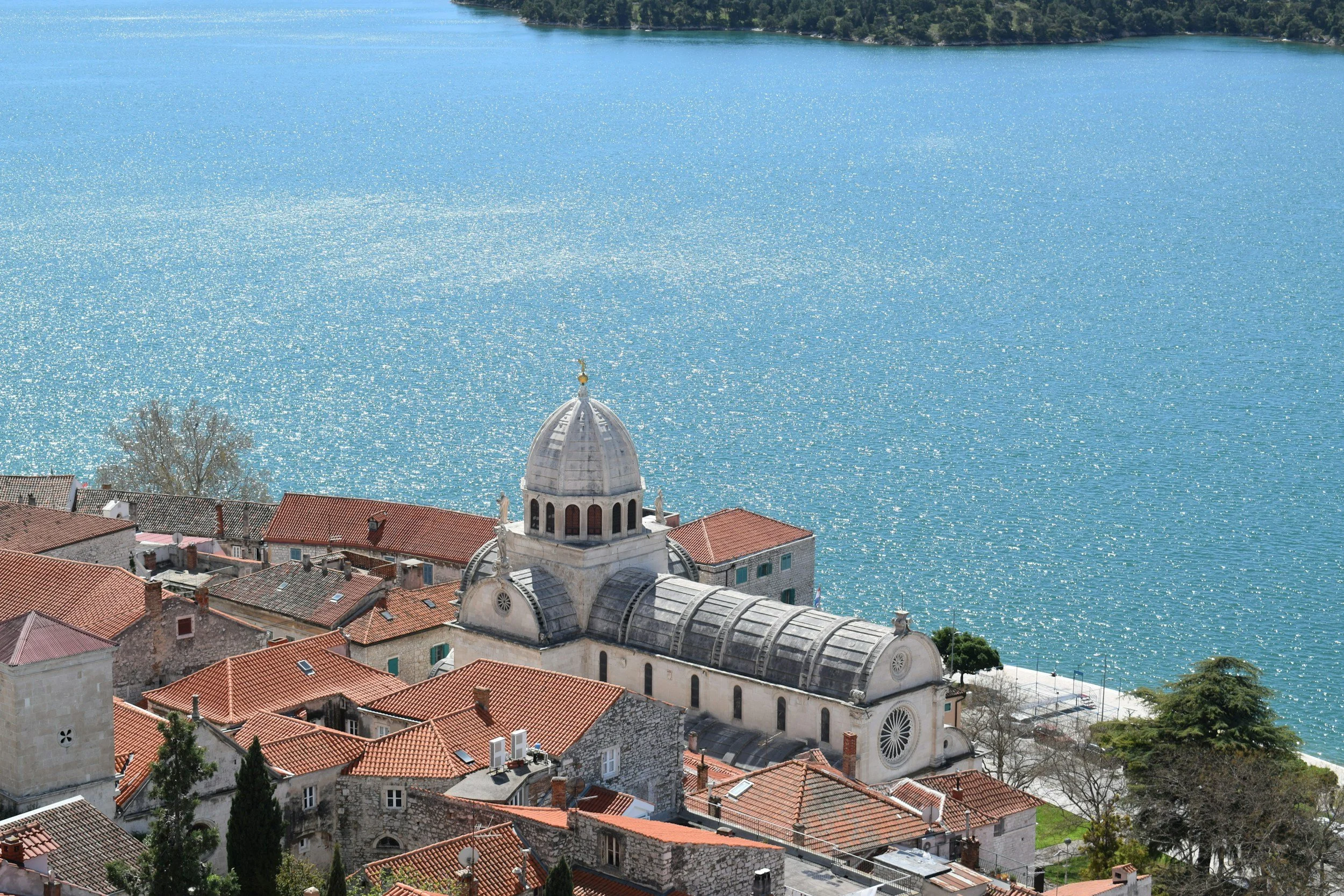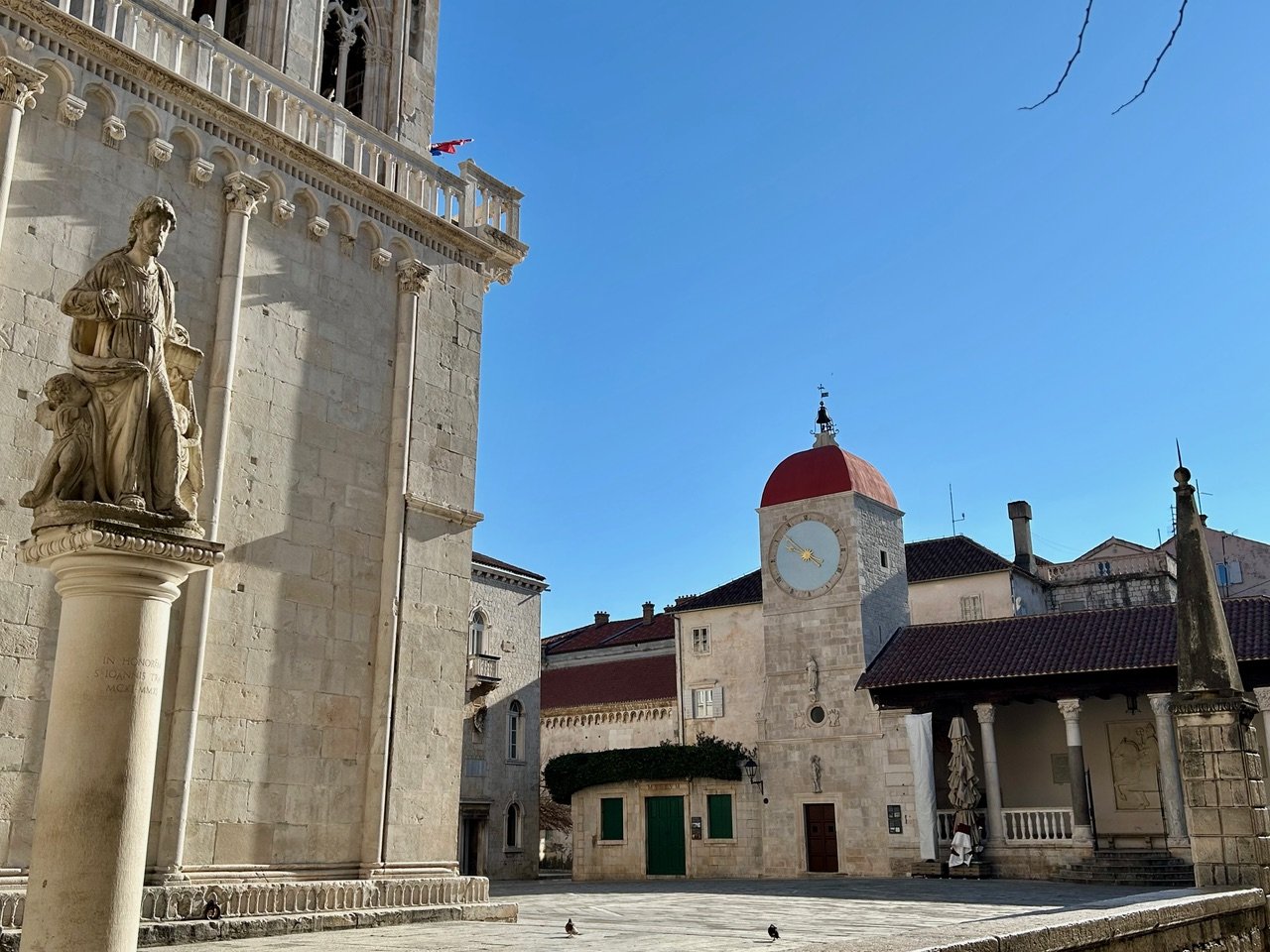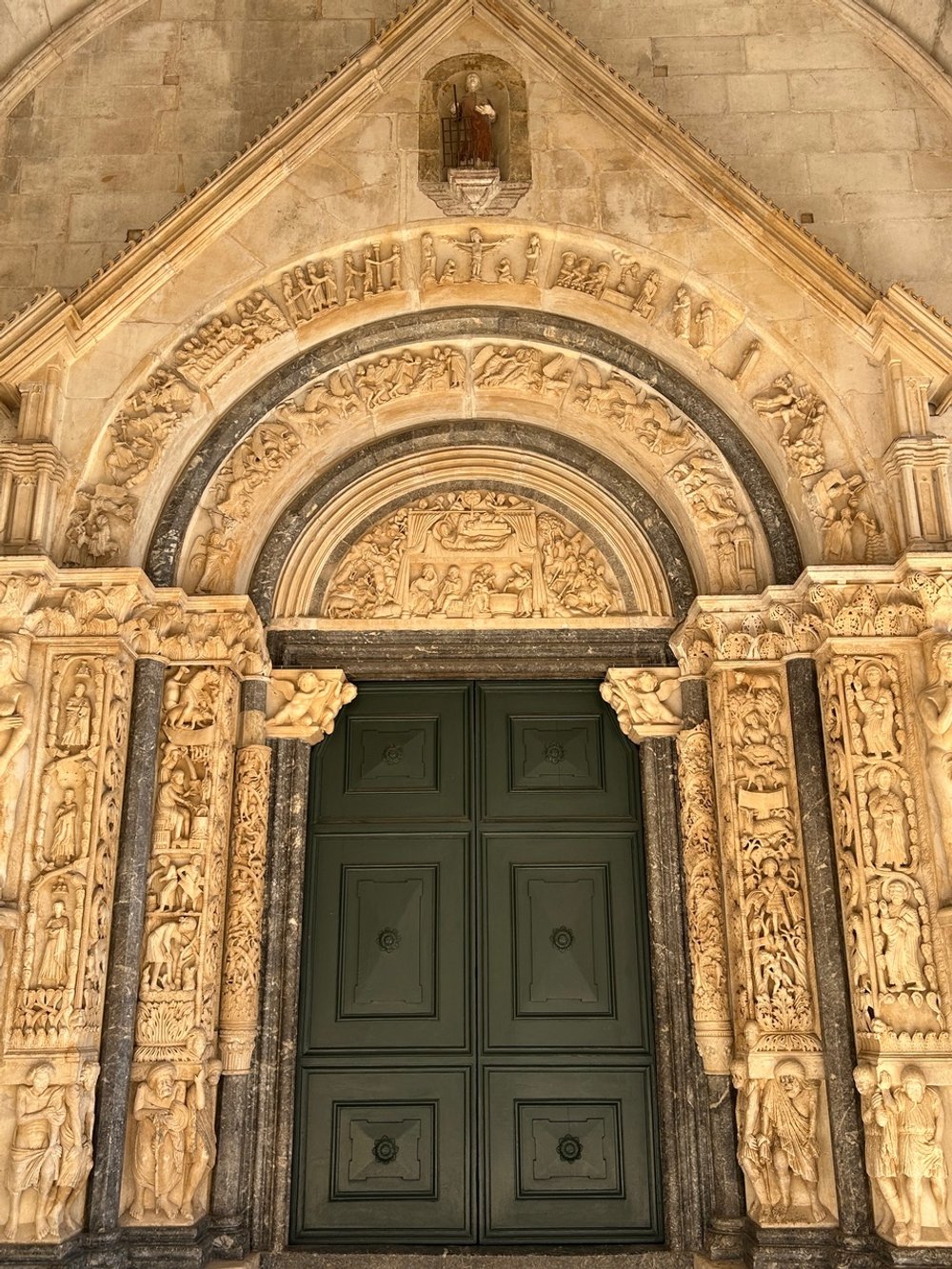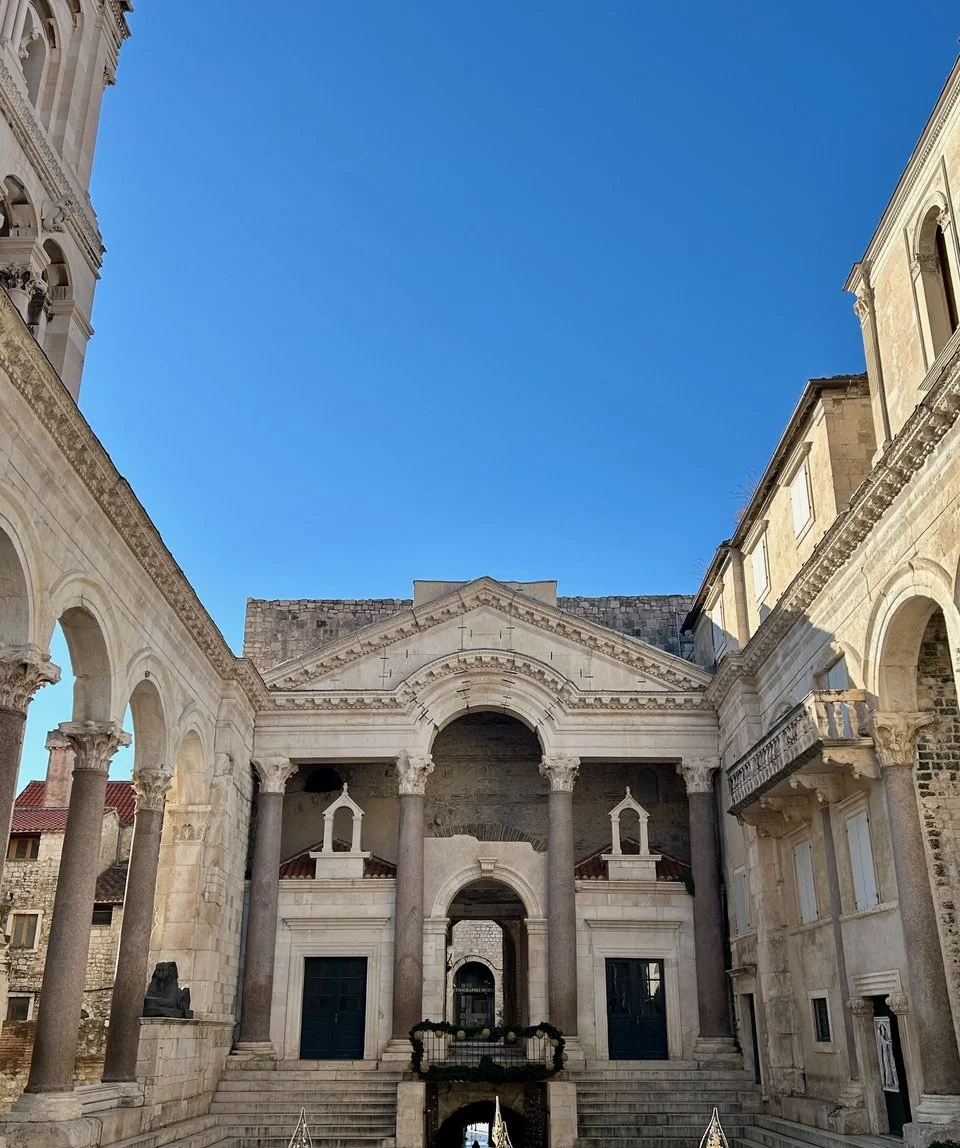Imperial Settings: Split & The Dalmatian Coast
Date - Monday 4 - Saturday 9 May 2026
Lecturer - James Hill
Location - Split, Croatia
Price - £3170 per person (2 sharing a room)
Hanging necklace-like along the Adriatic coast of Croatia, Split and Dalmatia have deep historical roots embedded in many competing cultural identities. In the annals of history, Dalmatia’s most important personality was undoubtably Gaius Aurelius Valerius Diocletianus, better known as the Emperor Diocletian. His revolutionary division of the Roman world into Western and Eastern Roman Empires and ruled as a tetrarchy, will resonate for centuries. Echoing Robert Adam who later still admired the “delicacy of taste” at the emperor’s palace, we too shall, next spring, make a ‘jaunt to Dalmatia’ to explore Diocletian’s legacy and visit the handsome towns - wholly Venetian in appearance - that pepper the spectacular Croatian coastline around Split and on the delightful island of Hvar.
-
Explore Emperor Diocletian’s Palace in Split, one of the Mediterranean’s great classical sites
Spectacular scenery along the Dalmatian coastline
Captivating Medieval, Renaissance & Baroque architecture
Centrally located & well-appointed 4 star hotel in the heart of Split
Visit to Hvar Island
Excellent food and wine throughout
Hanging necklace-like along the Adriatic coast, Split and Dalmatia have deep historical roots embedded in many competing cultural identities. To begin, Illyrian tribesman held out until the Greeks took charge, followed by the Romans who created Dalmatia as an important province. Its most famous Roman was undoubtably Gaius Aurelius Valerius Diocletianus, better known as the Emperor Diocletian (244 – 312 AD). His revolutionary division of the Roman world into Western and Eastern Roman Empires at the end of the third century AD and ruled as a tetrarchy will resonate through history. Remarkably, he was able to retire, building a fortified palace close to the sea at Split.
When the eastern Roman Empire metamorphosed into ‘Byzantium’, a continuous oscillation of power between constantly warring forces dominated the complex Slavic migrations of the medieval period. Subsequent Venetian, Ottoman and Habsburg expansion would carry the region towards at times peace and prosperity, and ultimately to the artificially constructed ‘Land of the Southern Slavs’, a dubious entity which eventually became the former kingdoms and later Federal Socialist Republic of Yugoslavia in the last century.
This trajectory ultimately led to chaos on the crescendo of socio-political tensions in the republic and later triggered by the fall of the Soviet world and its communist satellite states. Yugoslavia imploded. The intense tragedy of break-up eventually led to several independent nations, including Croatia. It is now a prosperous and peaceful country which has found its place in the wider community of European nations. Part Slavic, part Mediterranean and part ‘Mittel Europe’, Croatia is a rich tapestry woven from its extraordinary history.
During the region’s long history, the islands of Dalmatia played host to frequent naval confrontations between trading and often warring nations that used this busy Adriatic channel. In search of such encounters, we shall travel by boat to Hvar, Venice’s physical imprint expressed beautifully in pretty Hvar Town. Likewise, splendid churches and secular buildings carved from brilliant white Croatian and Istrian limestone proudly dominate many of the almond-shaped medieval centres we shall visit. Zadar, the ancient Byzantine capital of Dalmatia, Trogir and Sibenik not only jut out spur-like into the sea but are also graced with the classical symmetry of the Venetians with their loggias and piazzas, amongst which we shall meander during our week.
In the eighteenth century, Robert Adam took a diversion on his Grand Tour making his “jaunt to Dalmatia” to explore Diocletian’s Palace. Admiring “the delicacy of the emperor’s taste”, the palace inspired some of Adam’s most famous houses such as Syon and Kedleston. Our own “jaunt to Dalmatia” will be based at coastal Split as we explore the evocative Emperor Diocletian’s Palace and nearby Salona, the Roman settlement overlooking Split where the emperor was born. We stay at the 4* Hotel Cornaro, ideally located in the old town of Split.
-
Day 1: Monday 4 May – We fly from London Heathrow Terminal 5 to Split in Croatia arriving mid-afternoon.. We meet our driver and drive the short distance to Split where we spend 5 nights at the 4* Hotel Cornaro. Following check-in and time to rest, we walk through the old town and our first group dinner. Wine, water and coffee are included with all group meals.
Day 2: Tuesday 5 May – Our first day in and around Split will be dominated by one man, Gaius Aurelius Valerius Diocletianus, the Roman Emperor, Diocletian. We firstly drive the short distance out of town to the archaeological site at Salona, a small Roman settlement where the emperor, slave-born, began his rise to military success and the Imperial purple. After a coffee break, we return to Split and visit the town’s Archaeological Museum, rich in finds from both Salona and Split. After lunch (not included), we shall visit the walls, porticos and peristyle of Diocletian’s Palace, built by the emperor as a ‘retirement home’ after he uniquely resigned all his Imperial dignities and duties in 305AD. Two of the modified temples are today the cathedral and baptistry, both of which we shall visit, as well as the underground spaces of the palace. For many, it is one of the most exciting classical spaces of the Ancient Roman world. Following our day exploring Split, the evening will be free.
Day 3: Wednesday 6 May – Today, we drive northwards along the Dalmatian Coast to the ancient Byzantine city at Zadar, a most handsome place. Despite its Slavic background this was one of the coastal ports over which Venice strove so long to impose its will, not least via the terrible toll in human life lost here when the Venetians took it at the outset of the Fourth Crusade in 1202 on their way to sack Constantinople. Our morning will include visits to several buildings around what was the Roman Forum: the Cathedral, the Rotunda of St. Donatus and Santa Maria with its Museum of Church Art. Following our group lunch, we drive southwards to visit the fortress town of Sibenik. Here we shall find the particularly fine renaissance St. James’ Cathedral. We then return to Split after which the evening will be free.
Day 4: Thursday 7 May- Our half-day of activities centres on the seductive island of Trogir close to Split, whose architectural veneer is utterly Venetian in inspiration. This stylistic source is wonderfully handled by the skills of the local Slav master masons at the Cathedral, St Nicholas’ Convent and the town’s Dominican Church, all of which are richly rewarding. After an early group lunch and a little time to explore, we return the short distance to Split after which the remainder of the day will be free for private explorations.
Day 5: Friday 8 May – This morning we shall travel via catamaran from the nearby port in around an hour to Hvar Island to the west of Split, one of the hundreds of islands garlanding the Croatian Adriatic Coast. On arrival at Hvar Town, we shall have a coffee break, we are presented with a small town of singular beauty. We shall visit the Cathedral of St. Stephen and the richly endowed Franciscan Monastery. After some free time for lunch (not included) and time to explore, we return to Split by boat. Later in the evening, we shall have our group dinner in the centre of Split.
Day 6: Saturday 9 May – We depart our hotel after breakfast and make the short journey to Split Airport and our late morning return flight to London Heathrow.
-
PRACTICALITIES
Price £3170 per person (2 sharing a room) Without Flights £2895pp Deposit £495pp
Single Supplement £335 (Double for Sole Use Comfort Room)
Hotel 5 nights Bed & Breakfast at the 4* Hotel Cornaro, Split Couples/ 2 sharing - Superior Room
Flights British Airways:
Outward: BA950 Depart London Heathrow (Terminal 5) 1205 arrive Split 1540
Return: BA947 Depart Split 1140 arrive Heathrow(Terminal 5) 1320
Price includes 2 Dinners & 2 Lunches with wine, water & coffee, all local transfers, entry fees & gratuities, services of James Hill & our local tour guide, Ivica Profaca
Not included Travel to/from Heathrow, 3 Dinners & 2 Lunches
Please note our tours generally involve a significant amount of standing and walking, sometimes across uneven ground, or over cobbled streets, or up and down steps and inclines. We do not have an upper age limit for participants, but we require you to have a level of fitness which does not affect other participants' enjoyment of the tour. Please also note that many palaces, gardens, villas, museums and galleries have limited seating and perhaps do not have lifts. You should be able to walk at a reasonable pace and/or stand for at least twenty minutes without aid or requiring a rest. If you are in any doubt, please do contact us for advice on the tour’s suitability for you.
